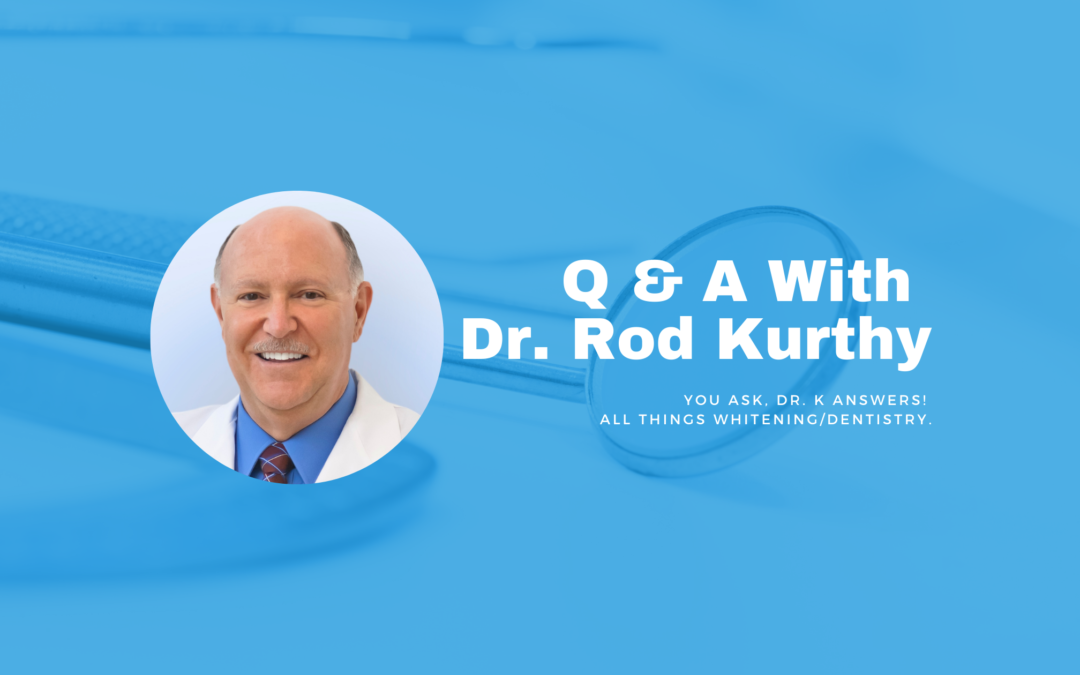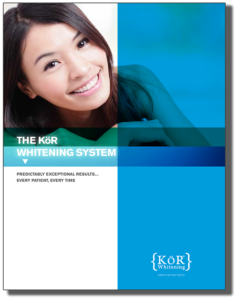Jacob asked: “My patient finished ortho treatment, he wants to get rid of the white spots but must wear retainers 24/7 for the next 6 months. How should we proceed with whitening? Will in-office only work?”
Hi Jacob,
Your question seems to have two parts:
- Whitening white spots. First, let me say that you simply cannot fix white spots with whitening. The best you can do is bring the background as white as possible, so there is far less contrast. White spots are optical illusions caused by a dysmineralization during the formation of the teeth, or demineralization, such as white spots that occur during orthodontic treatment.
But there are other processes to then address the white spots if they still are not acceptable to the patient after whitening. I recently answered a question regarding white and brown spots associated with fluorosis, but my answer to that question is pertinent to any type of white spot. You can find that blog post here. - How to proceed with whitening after ortho treatment when the patient is supposed to wear retainers 24/7 for 6 months.
I’ll first apologize that I don’t have anything brilliant to say regarding this. This is a tough situation. So I’ll just ramble a bit below regarding this topic…
This doesn’t answer your question, but I do believe it’s important – I recommend whitening before orthodontics instead of after. I know that this means more work – whitening trays before ortho, and then a brand new set of trays after ortho. But I always think about how I’d handle things for my kids. The following is what I would do for my own family.
Whiten prior to ortho. At this point, there is no resin on the enamel (or “in” the enamel”) from the bonding of brackets or other ortho devices.
When bonding for orthodontic brackets or aligner attachments, you’re bonding to uncut enamel, which, as you know, requires a longer etching time. There’s really no specific length of time recommended to etch because the amorphous surface layer of enamel is so different, with different thicknesses, from patient to patient.
The result is that most offices performing orthodontic treatment use extended etching times. Often it is the assistants who etch and bond. We never know how thick that amorphous layer of enamel is, so often etching will extend deeper into the enamel than we want or anticipate. This means that unfilled bonding resin will permeate deeply into the teeth resulting in enamel saturated with resin.
When this happens, it can significantly decrease whitening effectiveness under those resin-impregnated areas of enamel. Sure, we know that bleaching factors (such as perhydroxyl radicals) will move laterally under resins, but in those cases, we’re dealing with diminishing returns. In other words, far less effectiveness.
I’ve seen some really horrible results of whitening when this scenario has happened. But if the teeth had been whitened before ortho, this would be a minimal or no problem.
Also, when the teeth are thoroughly whitened prior to ortho, there should be less anxiousness about having whitening done immediately after ortho. That means less pressure by the patient/parent to whiten immediately.
Sure, after whitening, you’ll need to make new whitening trays to enhance (top off) and freshen the whitening result, and to use for ongoing whitening maintenance. But if you’re a fastidious dentist, and your patient is eager for the best smile possible, this is the way to go.
But that’s not really what you asked…
When considering how to approach whitening immediately after ortho, your best choice is to wait a bit. Often, however, your patient may be disappointed. So you feel the pressure.
Next, consider if the orthodontist has placed fixed lingual retainers. If so, the orthodontist may be willing to agree to tray whitening. And if not, the orthodontist may elect/agree to place lingual retainers to make the patient happy. In fact, if you’re not going to whiten prior to ortho, talking to the orthodontist, patient (or patient’s parent) prior to the end of ortho about all of this is very important.
You may discuss possibly alternating nights/days of tray whitening and retainer wearing. The orthodontist may say yay or nay…or may say OK, but wait a certain amount of time first.
As far as in-office whitening instead of tray whitening goes, I’m not a fan.
If you’re looking for a genuinely great result, and a long-term happy patient, the science just doesn’t support that. To achieve genuine, long-lasting whitening, you need very effective tray whitening at home first. Extended time tray whitening cleanses the internal structure of the teeth, removing intrinsic stain from inside the tooth structure.
Peroxide breaks down to hydroxyl, perhydroxyl, and superoxide radicals. These “scrubbing bubbles” get inside tooth structure and break up long-chain intrinsic stain molecules that are plugging up the internal tooth structure (in the interprismatic, intraprismatic, and intracrystalline spaces) and literally pushes those tiny, broken-down, stain particles that have been created right out of the teeth. You can think of it as reversing the process of extrinsic stain becoming intrinsic stain.
You’ve seen the multiple studies showing that “typical” whitening trays only keep whitening gels active for 20-35 minutes. This is due to glutathione peroxidase, an antioxidant enzyme in saliva and sulcular fluid, seeping inside the whitening trays, and destroying the peroxide gel on contact. KöR-Seal Whitening trays are designed to create a seal to prevent rapid leakage of saliva and sulcular fluid under the trays, which results in a full 6+ hours of active whitening instead of the common 20-35 minutes.
This then results in exceptional internal cleansing of the tooth structure, and therefore far more whiteness. And if you decide to follow that with a high concentration in-office whitening visit, at that point, the high concentration bleaching factors can “dive” right down into the cleansed tooth structure and finish breaking up any more-resistant stains.
It is once the internal tooth structure is highly cleansed that the in-office whitening visit is super-effective. But to just use a short in-office whitening, that simply can’t accomplish what I discussed above.
I wish I had more definitive answers for you, Jacob, but there is no one size fits all here. I hope this helps.
Very best regards,

Dr. Rod Kurthy


